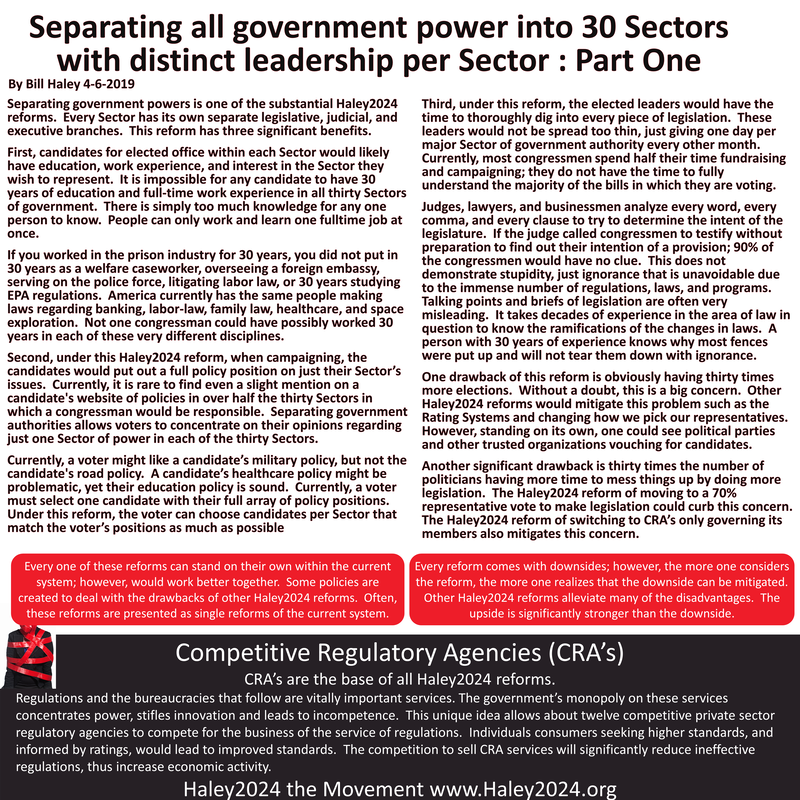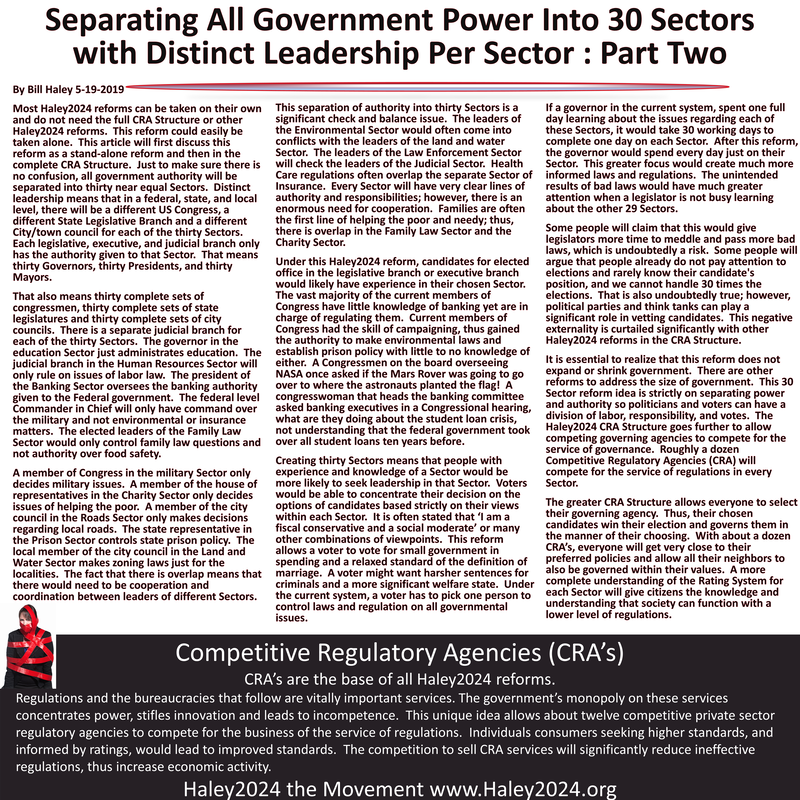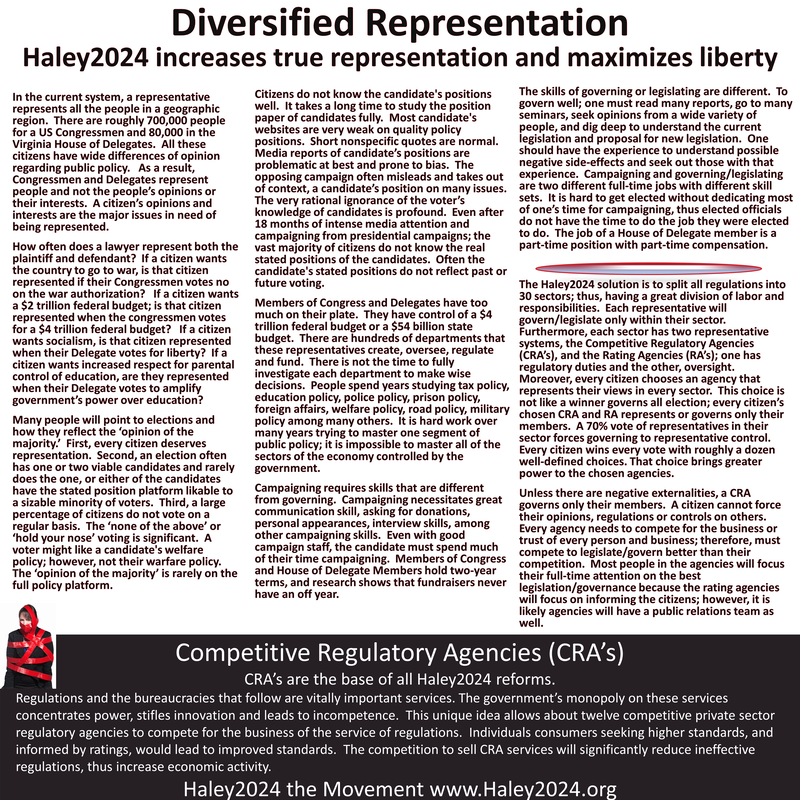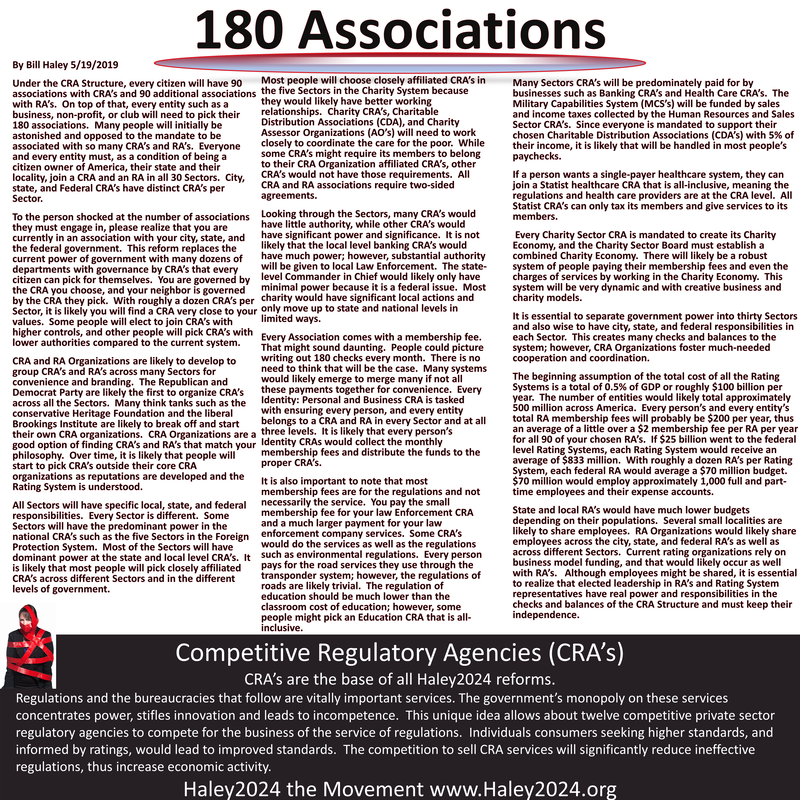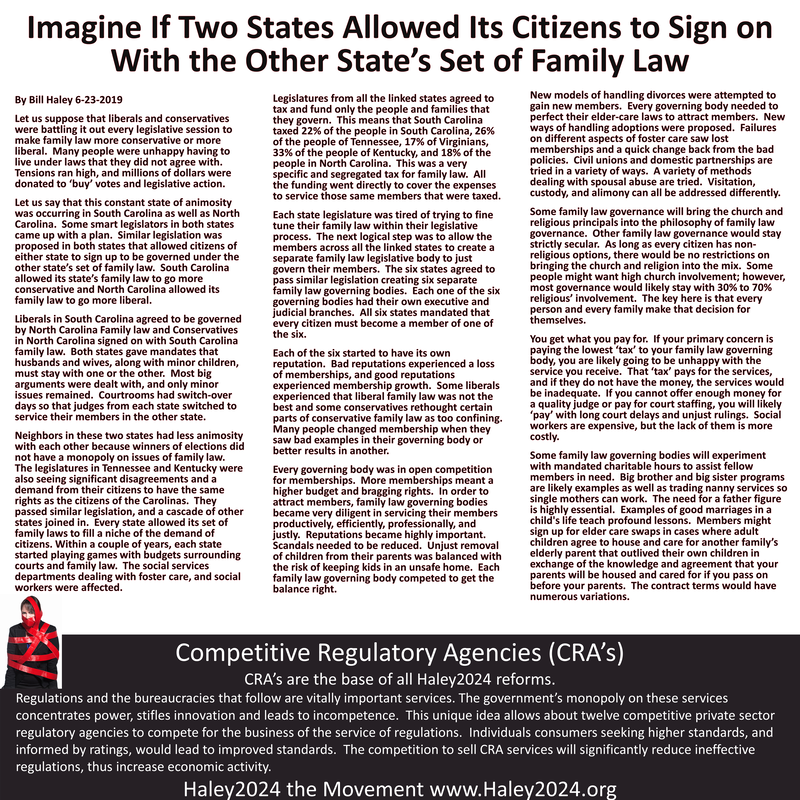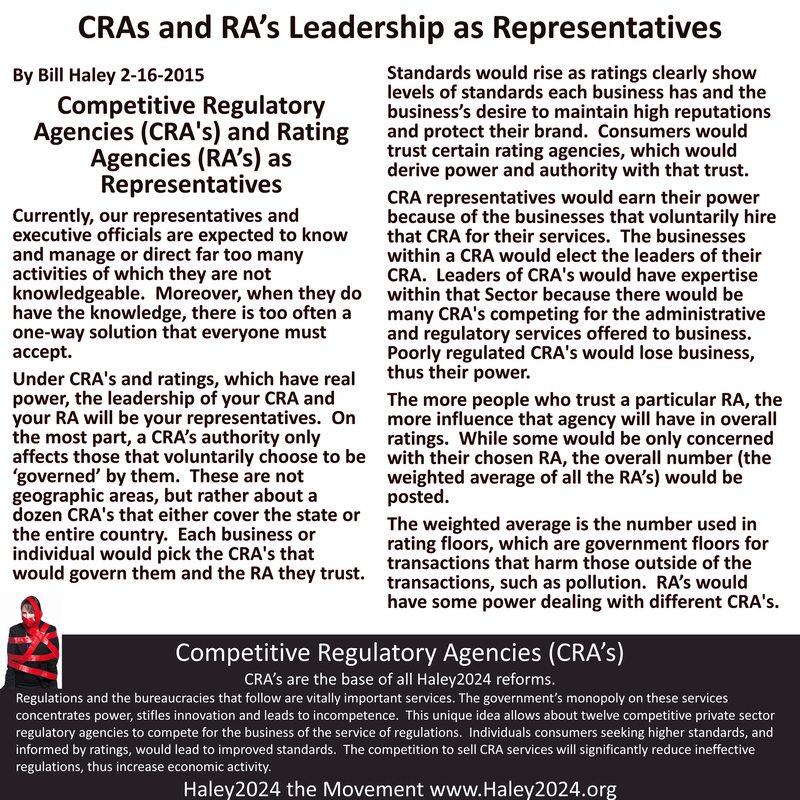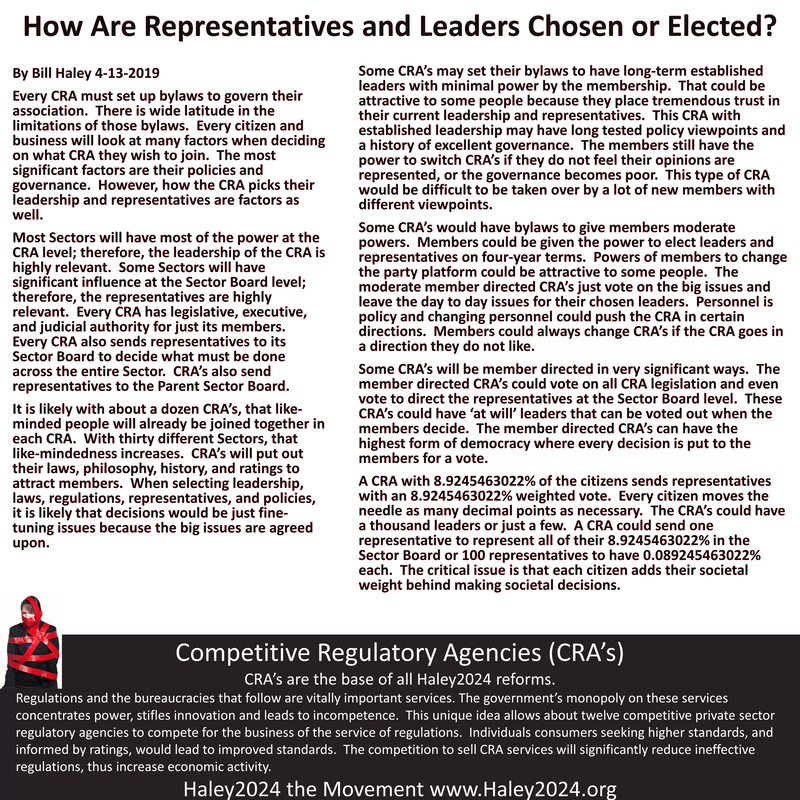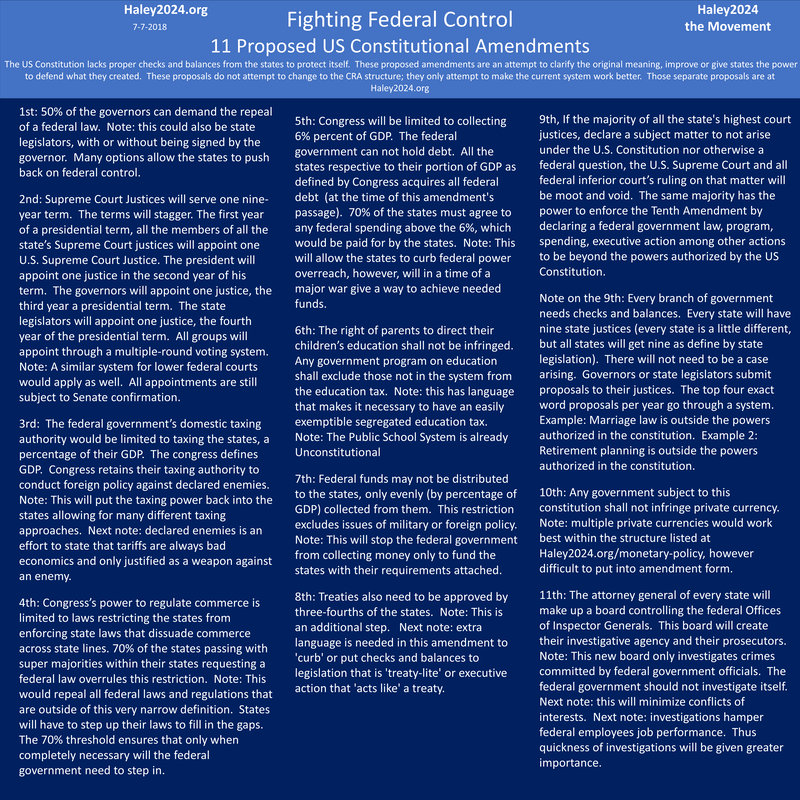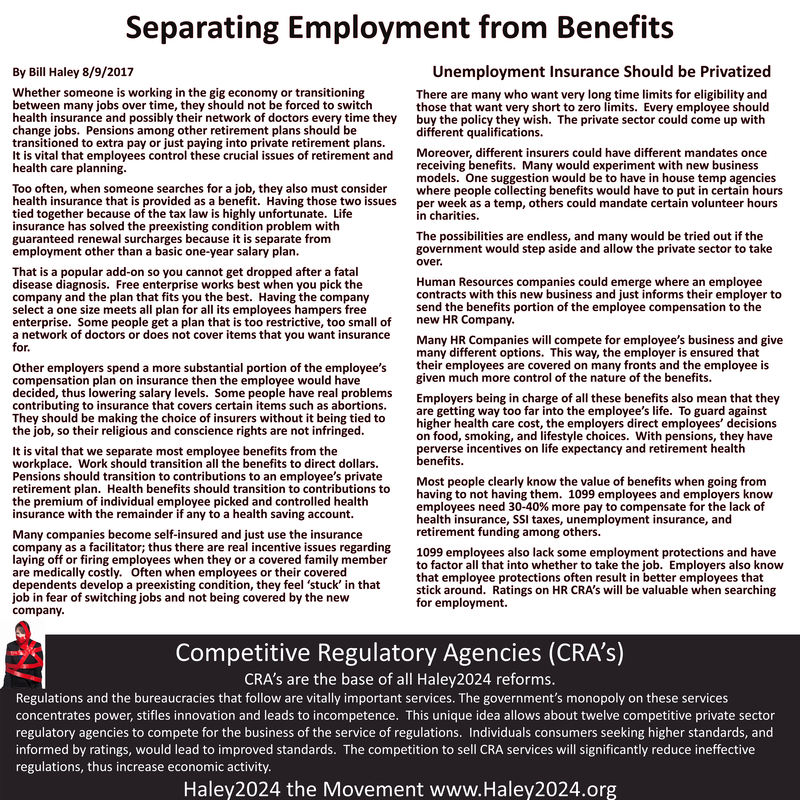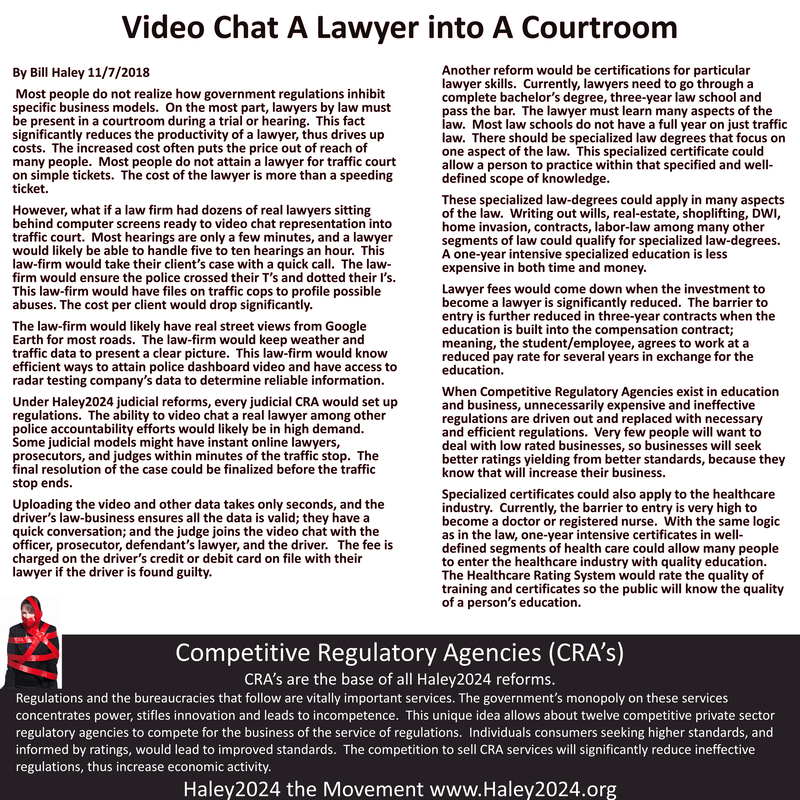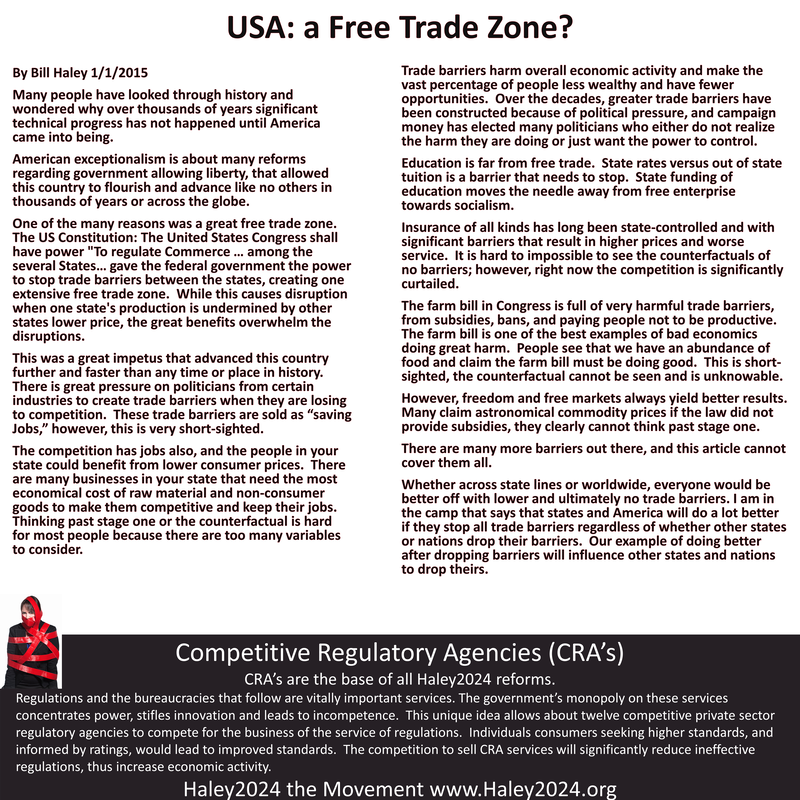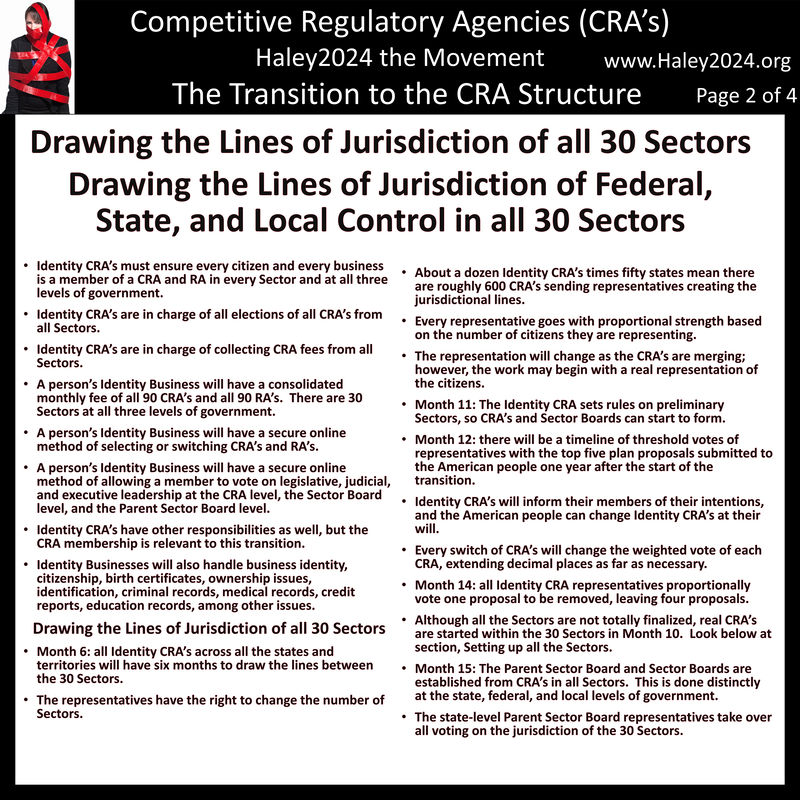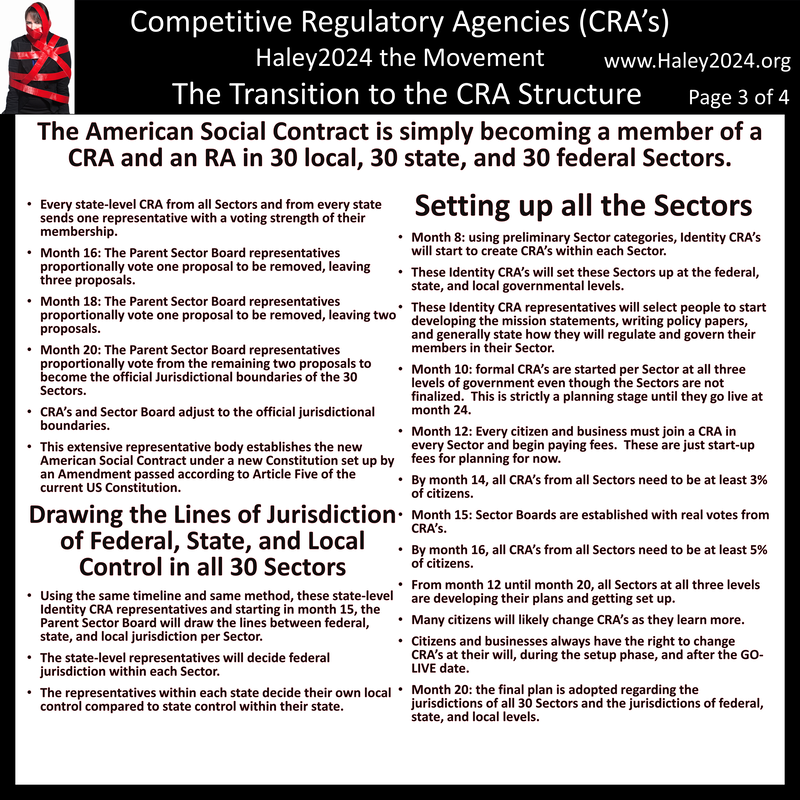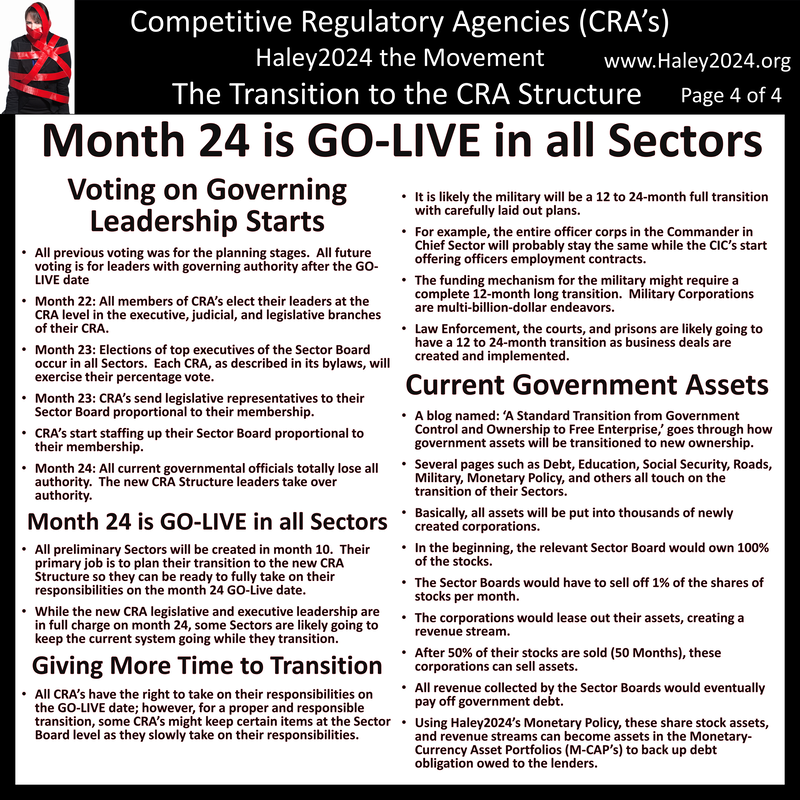The Need for a New System
Update 9-18-2021: Most of this was written before the middle of 2020. Small adjustments and a full proposed Constitutional amendment have been made since then.
|
Regulations and bureaucracies that follow are vital to society. However, the government’s monopoly control of these services stifles innovation and progress. Concentrating these powers in the hands of the few elected officials leads to incompetence and corruption. The skills necessary to get elected are not the skills of governing. The winner of a triathlon infrequently would place in an individual event; meaning studying all the sectors of the government means one does not have the time to master any one of them, much less all of them. Government’s monopoly control often yields low experimentations or examples to compare.
|
|
Government’s monopoly control creates greater political animosity because more is at stake when the electoral winner represents and controls all the people in a geographic area. Current members of Congress should not be called representatives.
There are hundreds of political issues; however, a voter has to pick one politician to control all the issues. Government’s monopoly control results in more political decisions versus educated decisions. Government’s monopoly control often grows in scope and level of authority. |
|
On the page ‘Structure of CRA,’ there is a greater explanation of every bullet point defining the structure of the reform, Competitive Regulatory Agencies. This page is designed to give short explanations and thought patterns for each of the bullet-points of the structure of CRA’s. The reasoning will be explained further with links to other pages and blogs on the webpage. While some might see this structure as complicated; in reality, it has much lower levels of complexity than the current government controlled regulatory system. Most of this structure curtail the negative natural externalities present when the government allows the greatest level of liberties, using representative control and quality information.
|
|
The law from State legislative branches would establish Competitive Regulatory Agencies with this structure. With quality representative oversight, all CRA’s will have real judicial authority to enforce their regulations with their members and those doing business under their CRA control. While there is no desire to disparage current judges, we have to ask the question, do we have the best? Do we have the best rules and policies written by politicians and bureaucrats that judges must follow? Proper ratings will eliminate the bad policies and keep increasing the effectiveness of good policies. Many lawyers standing in front of the judge make much more money than the judge. Are we getting the best judges from the pool of lawyers when the pay is so much lower? The role of prices is a valuable tool to achieve the correct compensation packages for judges.
|
|
On the page ‘Sector Boards of CRA,’ there is a greater explanation of all thirty sectors. All the sectors mean, everything currently regulated, owned or otherwise controlled by the government. If a current department is not listed, it will fall under one of these 30 sectors listed. After considerable study and discussion, the Parent Sector Board determines the number, the name, the nature, and the boundaries of every sector board. 30 sectors is a nice balance of too few and too many sectors. All sectors are subject to the full structure listed for CRA’s; however, some sectors warrant minor changes.
|
|
The concept of a rating system is key to any reform that would allow a competitive regulatory system. Consumers will naturally curtail negative externalities and low standards when they have the quality information they can trust. Consumers desire better food safety, environmental controls, labor conditions, among other standards; therefore, will reward better-rated products and penalize low standards by the choices of the products they purchase. The Haley2024 Rating System requires all product for sale to be rated. This rating system naturally has great influence, thus power. Therefore, just like regulations, the rating system divides this great power with competitive Rating Agencies (RA’s). There is a rating system for all thirty sectors, and each citizen gives their trust to an RA in each sector. Every RA is independent and will rate the way they decide. Some RA’s will dig deep and include all the ratings from the complete supply chain, for the good or the bad, thus curtailing the ‘gaming’ of the system. Some RA’s will look at second and third order effects, thus considering more items that matter.
|
|
Most businesses concentrate on their main business and try to concentrate their efforts on making better products and providing better services. Hiring regulatory agencies to provide expertise in workplace-safety, human resources, disability, insurance, financial, among others can be a great support. Having roughly a dozen CRA’s to choose from brings great competition to become the best regulator. The competitive rating system brings quality knowledge to the people to enhance competitive benefits. Private regulators such as the BBB and Realtor show that businesses see and are willing to pay for the value of showing higher standards.
|
|
The government currently has a monopoly on government-mandated regulations. Every business must conform to all government regulations regardless of how ineffective or hostile. Currently, private regulators will lose business if they add extra cost with low benefits. Government’s monopoly on regulations impedes new regulatory approaches by limiting examples and experimentation. The science of regulations is limited to the study of one or just a few regulatory approaches. Advancements in improved regulations are slow or even regressive because laws forbid or deter the experimental example necessary. This Haley2024 reform removes government regulations and mandates every person and every business pick a CRA.
|
|
Milton Friedman taught that nobody takes care of somebody else’s property as well as he or she takes care of his or her own. Politicians are human and are subject to human nature. Thus politicians do not care about getting the best regulations as much as business owner struggling to provide products and employ people. Campaign donations are valuable to elected officials and have a long history of influencing regulations. Implicit and explicit corruption increases as regulations grow in strictness level of control. A donation or a no-show job for a family member can make a politician justify in their mind, a certain set of regulations is the best for everybody. This Haley2024 reform removes the power of government regulations from politicians.
|
|
The skill set of a successful elected politician is speaking well, shaking many hands, asking many people for money, picking a good campaign team and remembering many poll-tested talking points. Many politicians know they need to over-sell and over-promise on the campaign trail. Politicians try to understand what voters want to hear and avoid talking about hard realities. Social Security is said to be the third rail of politics because talking about fixing it will destroy a politician. The skill of governing requires decades of study and real experience in all the departments of government. A person does not have the time or skill to have both skills. This Haley2024 reform removes the need for most campaigning and people will have quality information and real results of each CRA in order to choose wisely.
|
|
One day a politician might concentrate on education and the next day on welfare. Military, foreign policy, taxes, the budget, insurance, banking, prison, law enforcement, the environment among many other big topics could all get a day of study. Even the most diligent politician could not master all the issues. Somebody giving their undivided attention to one subject will become better informed about that one subject than someone that must keep their eye on all subjects. This Haley2024 reform separates all laws and regulations into thirty sectors and further splits powers and authorities between CRA’s and RA’s. Many representative groups such as CRA’s RA’s, MCS, MAA’s, ORA’s, CDA’s, AO’s and CPR’s will check abuses and limit negative externalities.
|
|
Roughly 90% of children are in public schools. Private schools must comply with 6 hours per day for 180 days a year. Education laws and regulations hamper new business/education models that might reduce cost and increase quality. Surely, experimentation in the military, policing, insurance, health-care among other sectors of the economy could result in improvements. This Haley2024 reform eliminates the monopoly and allows many business models to emerge.
|
|
There has always been animosity towards elected leaders; however, that animosity naturally grows when governments power grows. The federal government controlled less than 5% of GDP before the 1920’s; however, there has been a steady increase to roughly 40% in 2018. Federal regulatory control was also very limited until about 1920; however, has also grown considerably. As control over the people grows, the more people are angry if they do not like their controller. This Haley2024 reform removes almost all control away from government. A citizen or a business picks their CRA and picks their CRA leadership. A citizen’s liberties are only abridged to lower negative externalities or direct curtailing of others liberties.
|
|
Congress makes a mockery of the term ‘Representative.’ Representative means that the ideas, views, opinions, and the interest of a represented citizen is advanced and put forward by the representative to the governing body. That is not possible when one representative represents all 700,000 citizens in a geographic area. There are socialist, conservatives, liberals, libertarians, among others within these 700,000 citizens. Thus they have vastly different ideas, views, opinions, and interests. This Haley2024 reform creates real representatives when people choose from roughly a dozen different CRA’s and RA’s to represent them.
|
|
Moreover, after picking the closest CRA and RA to one’s values, they vote on the leadership of their CRA and RA. All Ron Paul supporters will likely group and then vote on their representative. Bernie Sanders, Ted Cruz, and other popular politicians will likely group their supporters under CRA organizations, and each set of supporters will vote on their leadership to govern them.
|
|
A voter might like 60% of a politician’s views and dislike the other 40%, compared 20% and 80% for the competitor in the election. Someone rarely agrees 100% with an elected leader. Rudy Giuliani joked that even he did not agree with his views over 20% of the time. Even if a citizen’s preferred candidate wins, a sizable percentage of issues will be hostile to their own. This Haley2024 reform allows every citizen to win their vote of roughly a dozen CRA’s and RA’s with diverse ideas separately on all thirty sectors.
|
|
If the budget included $3 billion for a road project in the district, would a politician be motivated to get a better deal and only bring in $2 billion to the district? A $2 billion versus a $3 billion road contract reduces profits needed for political donations and results in lower wages for the road crews. This Haley2024 reform brings competitive free markets into many areas currently controlled by the government.
|
|
A politician knows that if they bring home the bacon to their district, they will gain votes in the next election. Military and road spending are common big dollar pork that voters love. A road to nowhere or a weapon system the Pentagon does not want is still fought for because they are political decisions and not well educated good governance. The taxpayers in each congressional district pay roughly 0.23% of the overall tax base, so it never makes sense to not get as much as they can for their district.
|
|
Most politicians believe they need more money and more control to deal with a certain issue properly. The budget increases and regulatory powers grow in the attempt to address the issue. The tendency is also to move responsibility to higher levels of government. 50 years ago, the government made the disastrous choice to help the poor and made things worse. Every decade the government sees the problem getting worse and adds money and regulations that only deepens the problem. The new generation of politicians misdiagnose the problem and prescribe ever-more poison.
|
|
How do we get from government control to private CRA's? First, because of the enormous power, CRA's and organizations would naturally emerge in all sectors. Over a five-year transition period, every person and every business can begin joining CRA's in all the sectors. Tax exemptions would match government expenditures related to that sector. CRA’s would all start with enforcing current regulations and would have a 5% per year change limit over the five-year transition period. However, after the five-year transition period, all restrictions on CRA’s are lifted.
|


